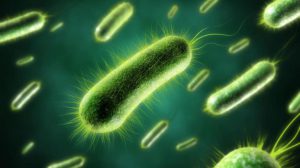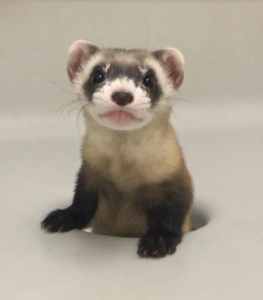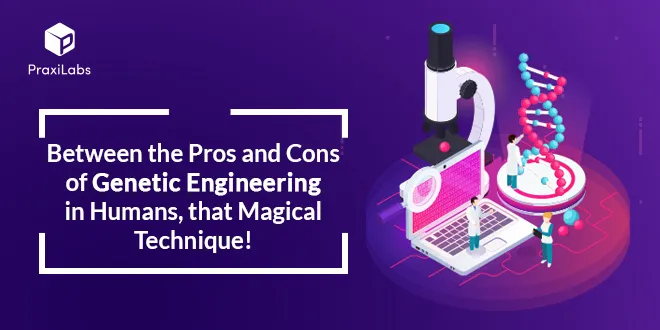Last Updated on August 22, 2025 by Muhamed Elmesery
Try to mention the expression of genetic engineering in humans among a bunch of people, or a community gathering. Now try to escape the endless amount of questions, hurdles, and debates that will arise. technical
Since their first days, genetic engineering, gene modification, and traits selection have always been controversial and have always been questioned, whether socially, scientifically, or ethically. Questions and interrogations considering safety, individual liberties, and social inequality and aristocracy are the main ones surrounding this hot topic.
In this article, we will talk about the definition of genetic engineering, what genetic engineering in humans is, and how it can affect our lives. What are the pros and cons of genetic engineering? What is the importance of genetic engineering in humans life? That’s in addition to discussing ethical and safety considerations and regulations that are of a huge importance to everyone, from scientists and researchers to patients & parents… Let’s start!
Start Your Virtual Experience For Free
Table of Contents
What is Genetic Engineering Used for?
Before knowing what genetic engineering is used for, let first things come first: what is genetic engineering in its essence? What is its definition?
Deep down the cells of any living organisms—whether it is a human being, an animal, a bacteria, or whatever—there are parts scientifically known as genes.
Half of those genes are inherited from one parent; consequently the other half is passed from the other parent, and both parents transmit certain traits to their offspring. Genes control the cells, and they stimulate the chemical reactions responsible for their functioning and growth.
Genetic engineering “or genetic modification” is defined as:
“the process of altering the DNA through direct manipulation by using laboratory-based technologies, hence changing the organism’s phenotype (genome) in a certain way”
In other words, this can lead to changing only one base pair of DNA (A-T, or C-G), removing a complete region of DNA, or adding an additional copy of gene to the DNA. It can also mean extracting DNA from another genome and pasting it to another genome’s DNA.
The timeline tracing the history of genetic engineering does not date back to ancient old ages; rather, it dates back to the 1970s. To be specific, it was not until 1973 that the first successful genetically modified organism was created: bacterium.

Following that year, DNA experiments and modifications started to occur more often, where these techniques were applied on mice (in 1974), and that was followed by applying it on plants. In 1994, the first genetically modified food was available, and later on, human beings took their turn as well.
Genetic engineering is used for many purposes and applications. Examples are many, such as agriculture, animal characteristics, health, and scientific research.
Genetic Engineering in Humans
Due to its extraordinarily high costs and its unpopularity, the utilization of genetic engineering in humans and their embryos is slowly growing and spreading, at least among the society’s most privileged classes. Genetic engineering in humans helps in “Hacking Darwin” and his theory about the most important evolutionary pillars.
Darwin’s essential evolution pillars are two, which are:
- Natural selection
- Random mutation
while with the usage of genetic engineering in humans techniques, both the pillars are canceled and are replaced by other concepts that should be approached cautiously.
Under the umbrella of fighting and limiting certain diseases, this technology is receiving funds, supported, and continuing to evolve, giving humans the chance to cut off or add some genes. However, we do not know what this “selective selection” can bring to our race.
Genetic Engineering in Humans Examples
Although examples of genetic engineering in humans and the modifications consequent on it are neither regularly, nor widely used techniques until today, we still have some examples to refer to, and here are some:
- Genetically engineered bacteria are exclusively used in various pharmaceuticals. Bacteria was the first organism to be used due to its simple genetic formation.
Insulin was the first chemically approved genetically engineered pharmaceutical product, produced by the Eli Lilly Corporation in 1982. Escherichia coli bacterium is the commonly used type in such a process.
Pharmaceuticals may vary from human synthetic insulin that treats diabetes to proteins used in blood clotting and to human growth hormones which treat dwarfism.
Insulin, the first genetically engineered pharmaceutical product - Cavity formation in humans’ teeth was successfully able to be reduced with the help of transgenic bacteria. It was done because genetic scientists and engineers managed to control this type of bacteria and not allow it to produce tooth-corroding lactic acid.
- The weirdest thing is a banana vaccine, in which the bananas are genetically modified in a way that offers a vaccine against many diseases, such as cholera and hepatitis.
It is a process similar to that of needle vaccine, where humans only need to eat the bananas in order to develop disease-combating antibodies; hence they gain immunity against these diseases. - The most recent genetically modified vaccines were produced by Pfizer and Moderna, amid the pandemic of COVID-19. Such vaccines use mRNA genetic sequencing, to aid the human’s body recognizing the COVID virus.
Benefits of Genetic Engineering in Humans
All our genetic engineering technologies and advanced techniques are designed to help us overcome any genetically undesired diseases or traits caused by inheritance. In other words, genetically modified animals, food, and plants are also designed to facilitate human’s life and bring him the utmost benefits.
The benefits and pros are uncountable, but here are some examples:
- Preventing the transmission of deadly diseases, such as cancer.
In 2009, the first “designer” baby was born successfully, where in her father’s family, most of the women died from various cancer types originating from undesired mutations in the BRCA-1 gene.
As a consequence, the parents did in-vitro fertilization and screened the fertilized eggs, upon which they chose one with no BRCA-1 mutation. By this, both of them prevented this mutation from ever happening in any future generations of this family.
Simulations of DNA and RNA extraction will help you understand how this process undergoes.
- Limiting disease infections caused by insects, like dengue fever, malaria, and the Zika virus, through sterilizing insects, i.e., mosquitos.
- Reducing hunger and famines around the world, by improving crop quality and crop yields. This also helps in countries’ development.
- Getting rid of undesired personal traits, where humans favor intelligence, beauty, muscle growth, and many other features. We can choose and design our preferable traits with the help of genetic engineering techniques.
This allows us to pave the way towards some very finely selected traits that cause natural selection to be canceled out. - Cloning animals to preserve endangered species, as is the situation with the black-footed ferret, the only ferret native to North America. This species’ existence was threatened as its main source of food, the prairie dogs, has critically dropped.
In 2020, scientists managed to complete the cloning project which started in 2013, and it resulted in the birth of Elizabeth Ann, a cloned kit. Elizabeth was cloned to bring some diversity amid the ferret members, which are 650 alive today.

Disadvantages of Genetic Engineering in Humans
Imagine if every human being started to prefer a certain trait and then managed to get it in the blink of an eye. We will end the broad window of genetic diversity we have by our own hands!
Genetic engineering may underlie many disadvantages, with some of them being crucial, while the others are some ethically asked questions which still have no answer. Some of these cons are listed below:
- Fear of spreading invasive species
Genetically modified (GM) animals and plants are well-known for their ability to adapt to different environments better than the regular ones. There are concerns around the possibility of uncontrollable growth, turning the species into invasive ones, to an extent where they harm the environment and the organisms themselves. - Uncontrollable population growth
Since disease is a major factor and one of the most effective tools that accounts for controlling humans’ population. By extending the lifespan of everyone throughout using genetic engineering in humans, this may result in outgrown numbers of humans.
Serious issues may arise as a consequence, i.e. problems with job availability, economic disparity, the necessity to provide higher levels of medical care, and the lack of agricultural products to cover everyone’s needs. - Higher risk of increasing allergies
The process here is a bit complicated, with the fact that allergens in GMO food are easily transferred from one crop to another. Hence, pregnant women eating GMO food might be endangering their offspring by altering their genetic codes and expressions.
Genetic editing is an irreversible process; once taking place, it cannot be reversed. Unfavored effects may emerge from the immediate evolutionary alterations done by our genetic engineering techniques, and the danger can reach some critical scenarios, i.e., allergic reactions may develop some sort of spontaneous reactions that can jeopardize our entire planet and our existence.
Other cons and disadvantages can be furtherly discussed around this topic, but we still got the point. Technology and new scientific techniques are a double-edged weapon, since the silver lining lies in their many benefits to humans and facilitating their lives, but by using them unreasonably, we might be bringing our own death quicker than ever.
In addition to all the previously mentioned risks, genetic engineering and its techniques are continuously investigated, because of all the ethical issues it brings up to the surface every time. All in all, genetic engineering in humans laws are of a huge importance in civil society and human rights debates.
DNA extractions and genetic engineering experiments are costly, yet require scientific guidance and supervision…
Join PraxiLabs the best virtual labs and discover this world now!
 PraxiLabs A virtual world of science
PraxiLabs A virtual world of science







